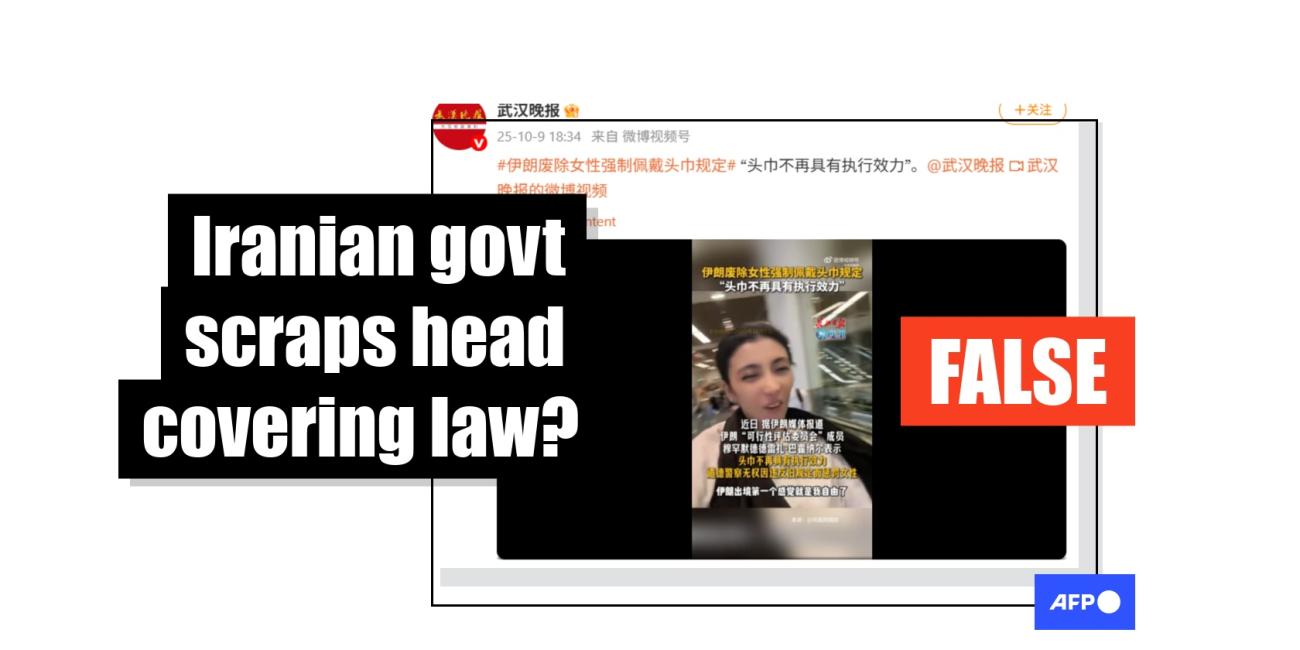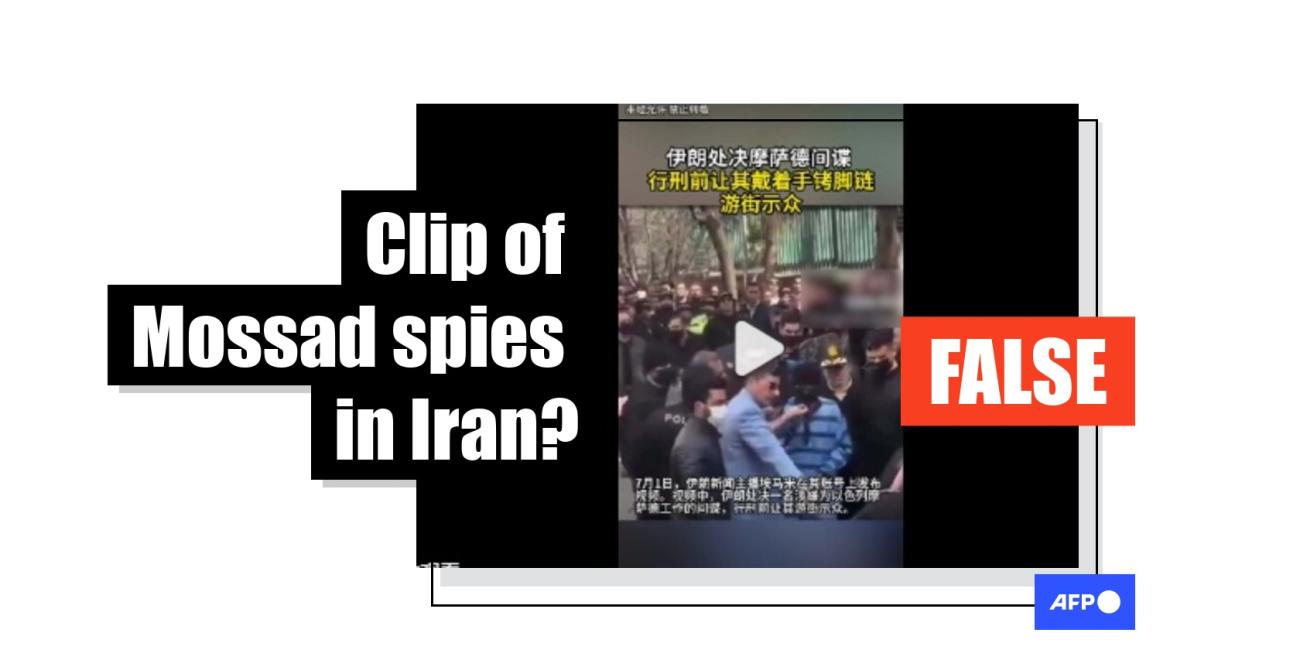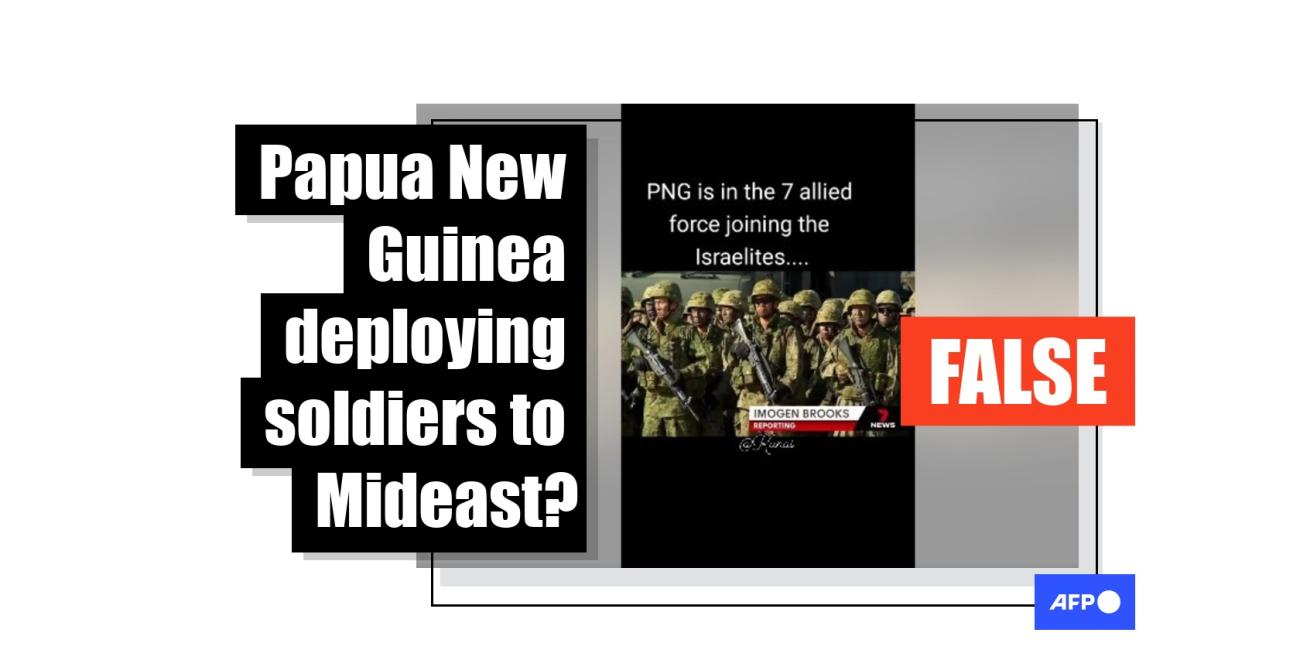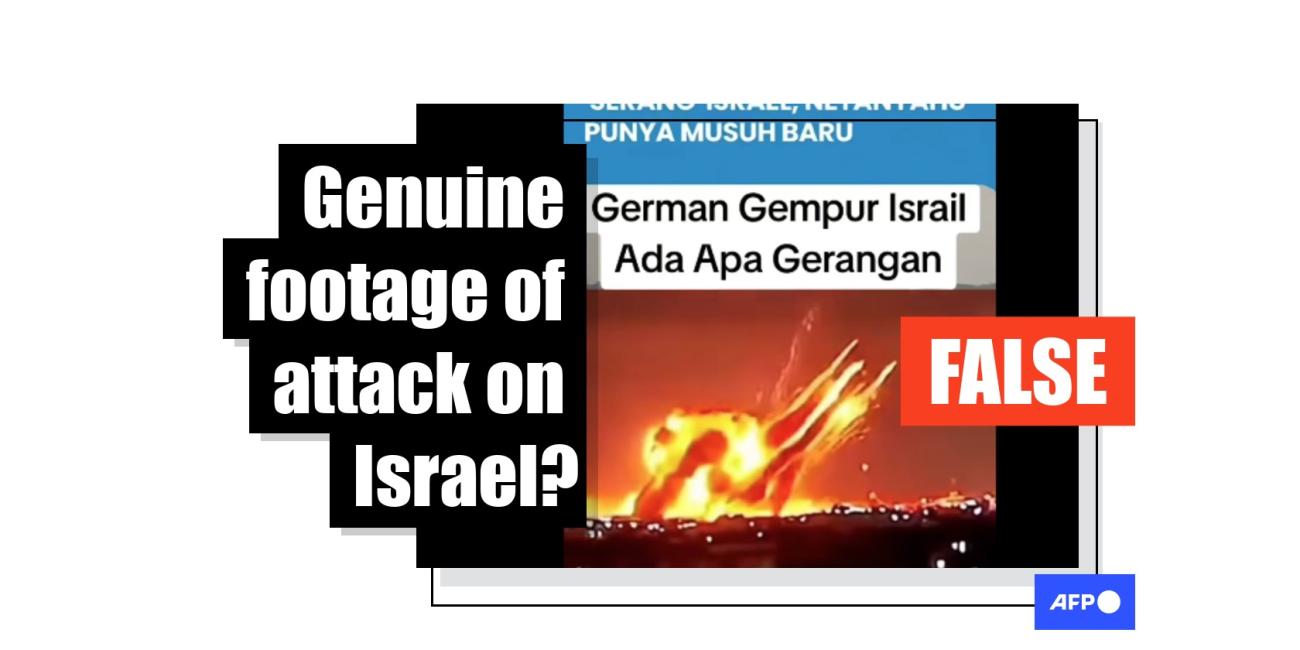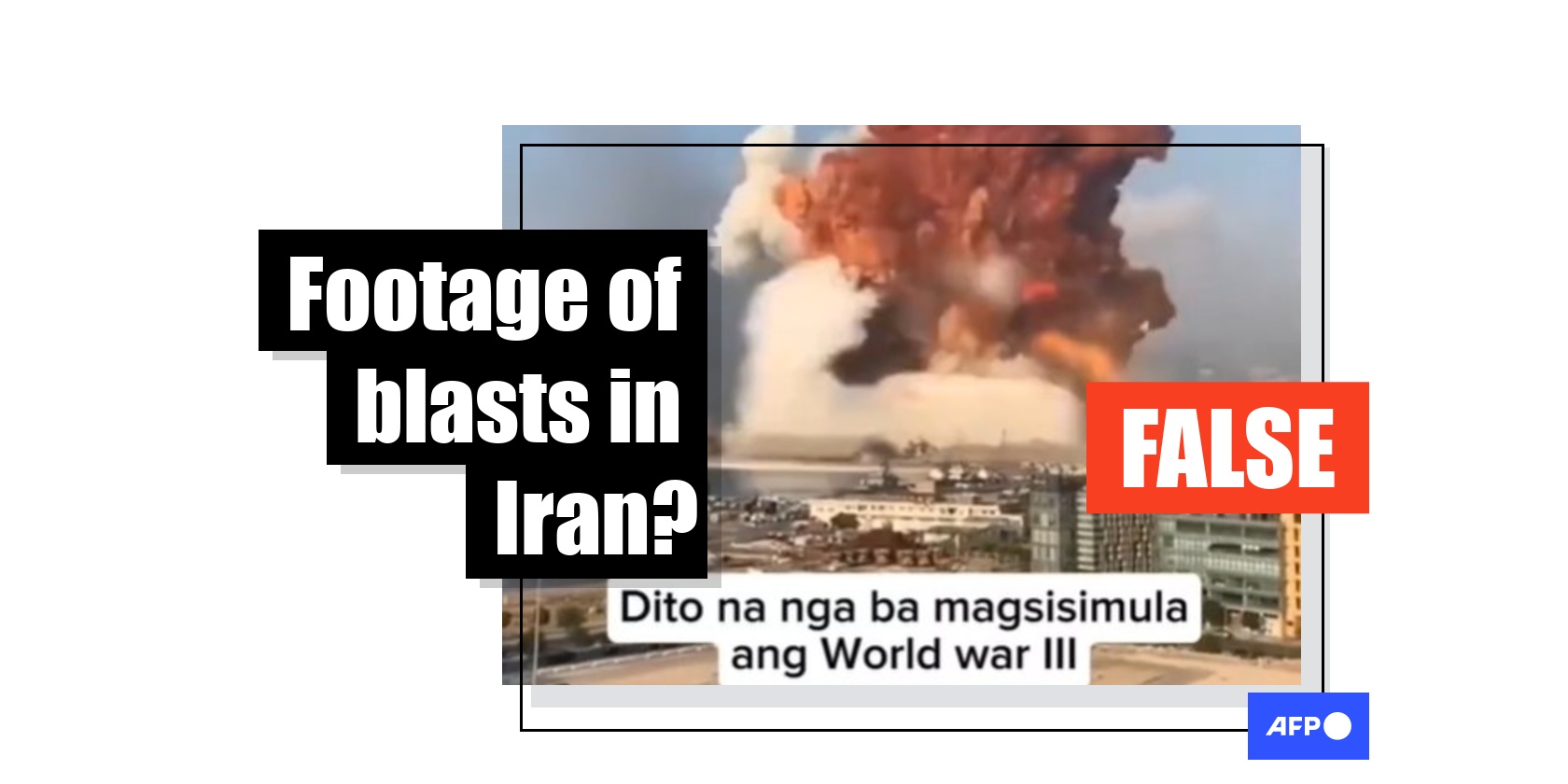
Clips show 2020 Beirut port explosion, not US strikes on Iran
- Published on July 1, 2025 at 11:16
- Updated on August 1, 2025 at 05:51
- 4 min read
- By Ara Eugenio, Harshana SILVA, AFP Philippines, AFP Sri Lanka
The United States launched unprecedented strikes on Iranian nuclear sites in June 2025 in support of its ally Israel, but a video compilation shared on social media does not show their impact. The footage previously circulated in news reports about a port explosion in Lebanon five years earlier and matches Google Street View imagery of the area surrounding the Port of Beirut.
"Donald Trump bombed a nuclear site in Iran," reads the superimposed Tagalog-language text on a compilation shared on TikTok on June 22, 2025.
"Is this the start of World War 3?"
The compilation -- viewed more than five million times -- features three different clips of a massive warehouse explosion.
The post's caption alludes to the United States' bombing of Iranian nuclear sites in Natanz, Isfahan and the mountain-buried Fordow facility on June 22 -- a show of support for its ally Israel that involved massive bunker-buster bombs and a guided missile launched from a submarine (archived link).
Israel struck Iranian nuclear and military facilities with a barrage of missiles on June 13, killing several top officials and prompting a counter-attack by Iran (archived link).
A US-brokered ceasefire announced on June 24 has so far held, though Iran has expressed doubt over Israel’s commitment to the truce that ended the most intense and destructive confrontation between the two foes to date (archived link).
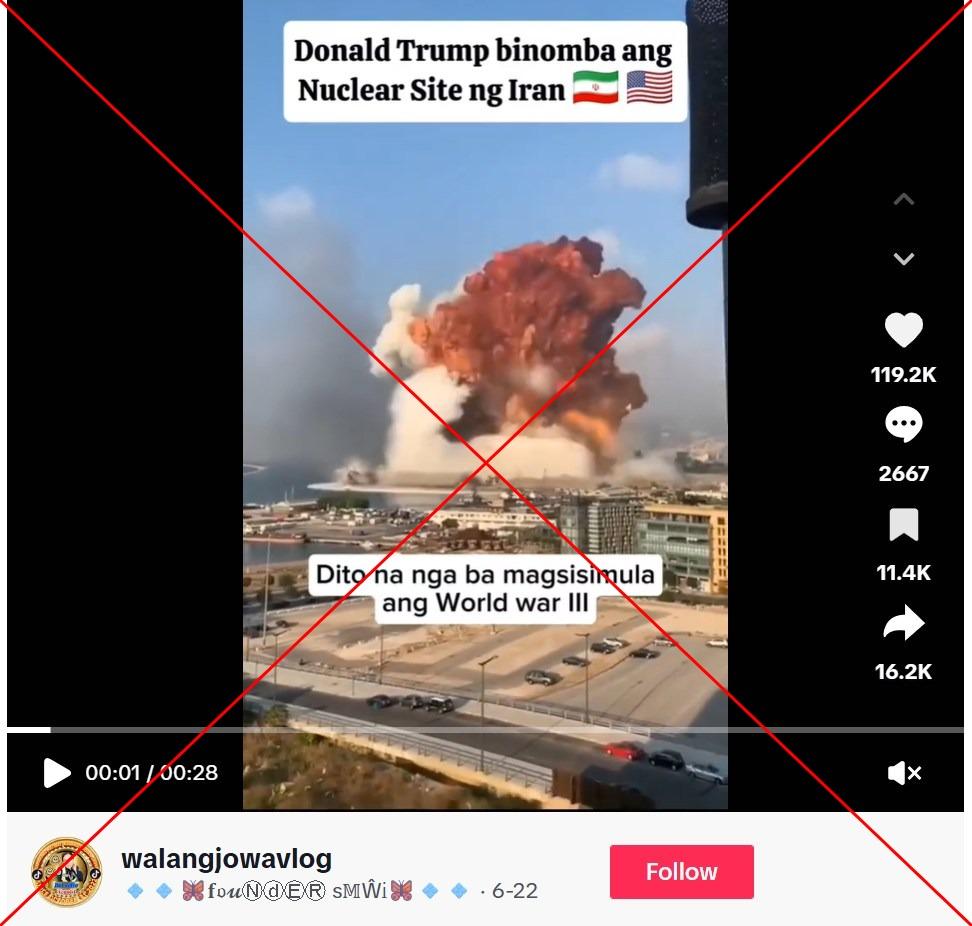
Similar posts circulated on social media in Tagalog, as well as in other languages such as Sinhala and Burmese, misleading users into thinking it showed actual scenes from the conflict.
"I hope the Philippines does not get involved in this," one user said.
Another commented: "This is scary. It really has started."
But the clips in the compilation are unrelated to the war between Iran and Israel.
Beirut port explosion
Reverse image searches on Google using keyframes of the falsely shared clips led to the same footage appearing in reports about a devastating port explosion in Lebanon's capital Beirut in August 2020.
The blast killed more than 200 people, injured at least 6,500 others and destroyed much of Beirut's port and surrounding areas.
It was caused by a fire in a warehouse that authorities acknowledged had held a vast stockpile of ammonium nitrate, triggering one of the world's biggest non-nuclear explosions (archived link).
Saudi state-owned broadcaster Al-Arabiya published the first clip on X on August 4, 2020 (archived link).
German public broadcaster Deutsche Welle and Britain's Sky News also shared the same video on their official YouTube accounts (archived here and here).
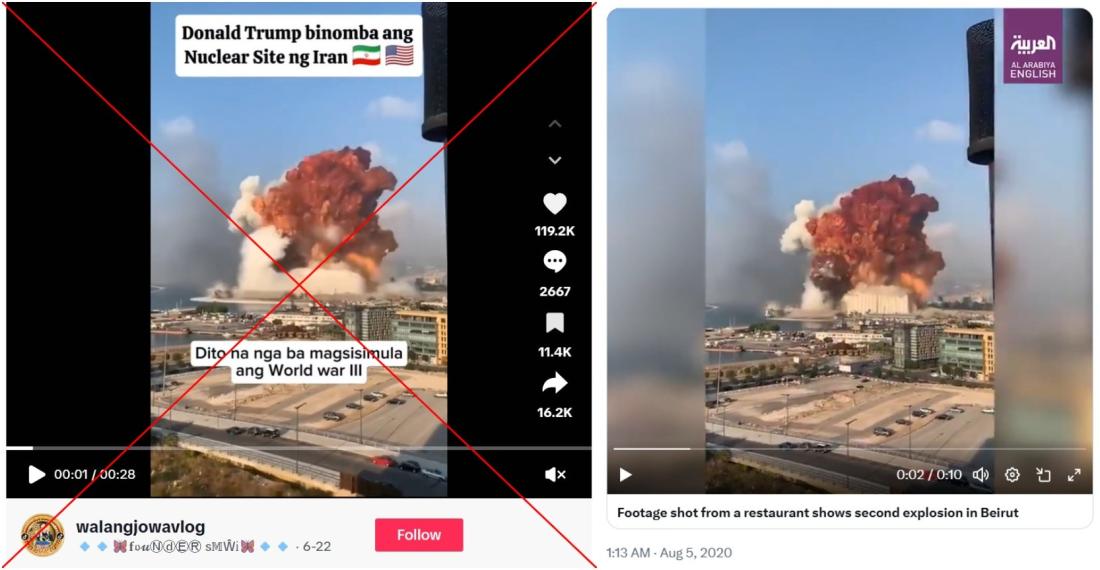
The footage also matches Google Maps imagery of the port area (archived link).
The second clip, showing the explosion from a moving car, was featured in an August 5, 2020 report by the Daily Mail and also corresponds to Google Maps imagery of a highway overlooking the port (archived here and here).
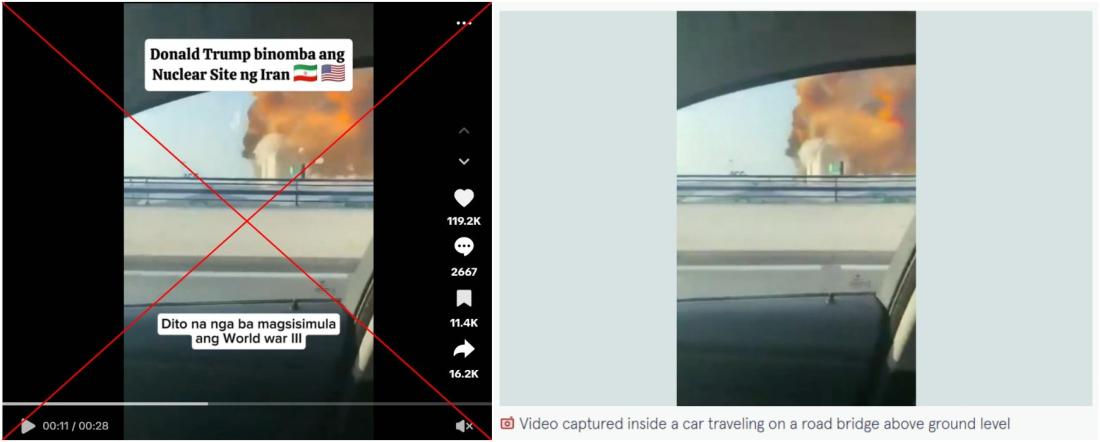
Finally, the third clip was likewise shared by Al-Arabiya, Deutsche Welle and Sky News in videos uploaded to YouTube in August 2020 (archived here, here and here).
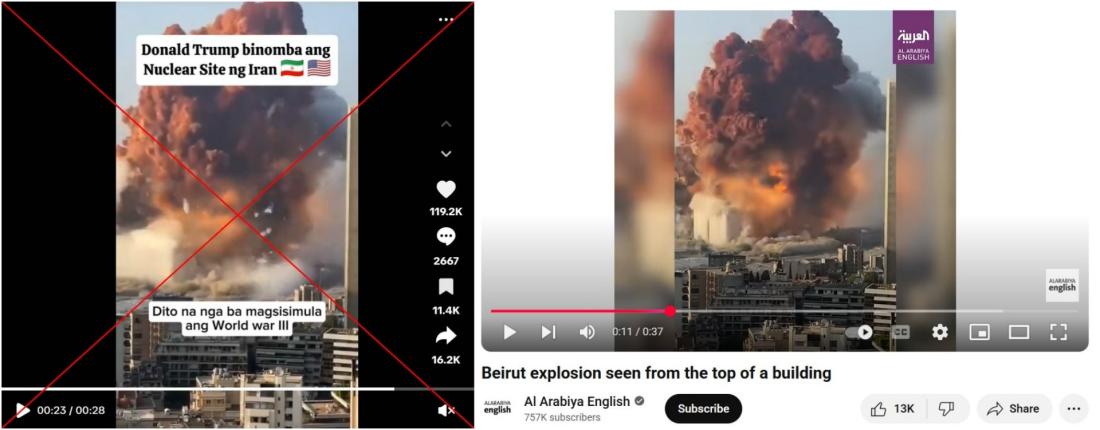
All the clips align with scenery of the Port of Beirut visible in a Google Maps photo uploaded in May 2020 -- months before the explosion (archived link).
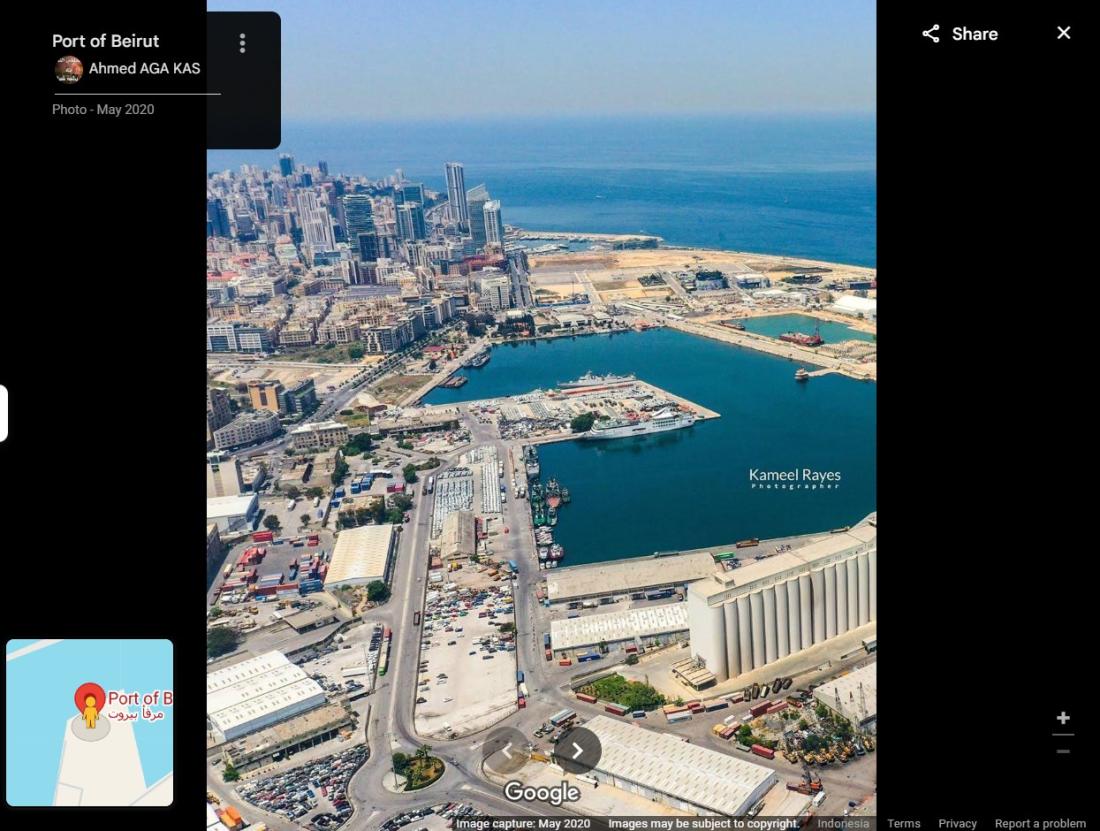
More clips
Another version of the claim in Sinhala-language included CCTV footage of a man and a child inside a flat.
It was previously shared by the Saudi Gazette and the UK's Metro newspaper at the time of the Beirut port blast (archived here and here).
The date printed on the CCTV footage -- August 4, 2020 -- also corresponds to the date of the explosion.
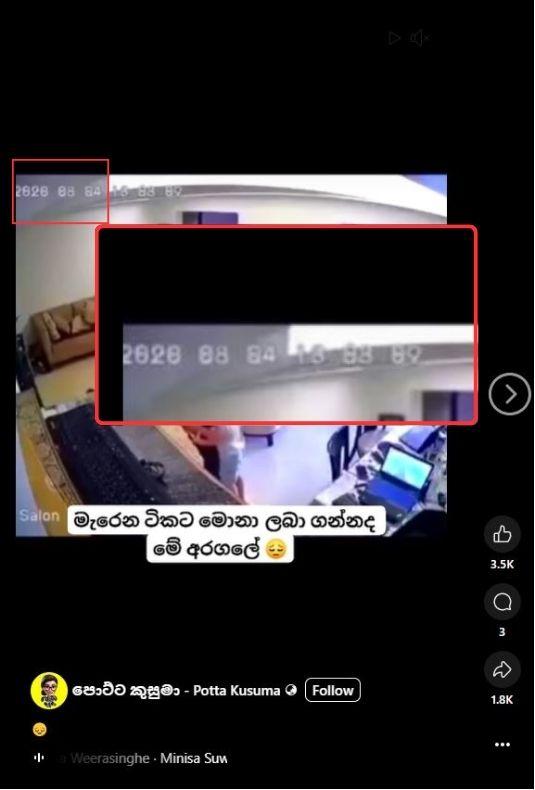
Another clip shows the aftermath of the explosion, and matches the scenes of devastation shown in AFP video posted in the days after the blast (archived link).
AFP has debunked other false claims related to the Iran-Israel conflict here.
This article was updated to correct "Daily Mirror" to "Daily Mail" in paragraph 18.August 1, 2025 This article was updated to correct "Daily Mirror" to "Daily Mail" in paragraph 18.
Copyright © AFP 2017-2026. Any commercial use of this content requires a subscription. Click here to find out more.
Is there content that you would like AFP to fact-check? Get in touch.
Contact us
